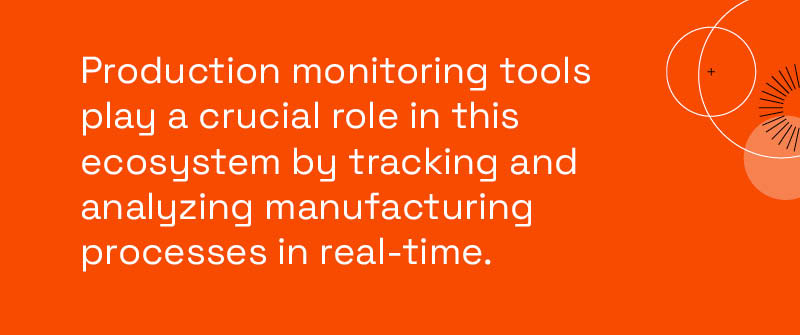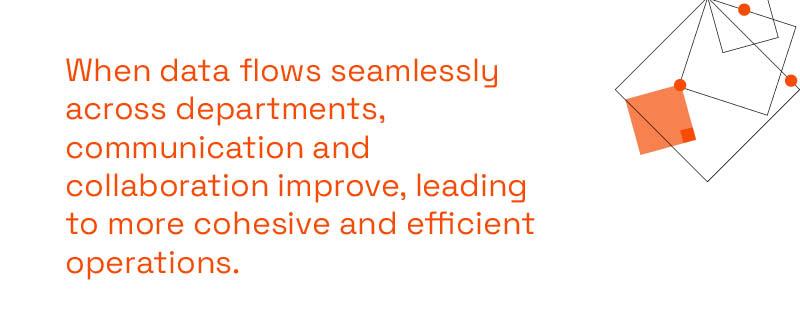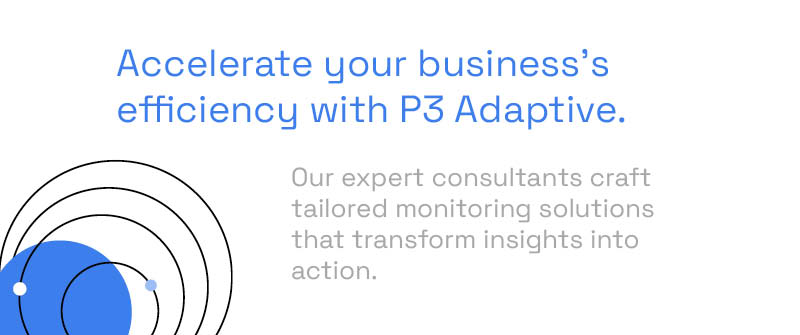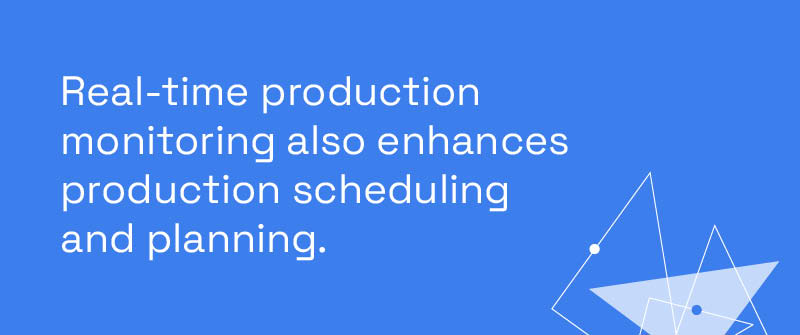
What Is Real Time Production Monitoring Of Manufacturing Processes?
Real-time monitoring in the manufacturing sector refers to the continuous tracking and analysis of production metrics as they happen. This practice, combined with manufacturing data analytics, allows for immediate insights and quicker decision-making, enhancing operational efficiency. By utilizing advanced technologies such as sensors, embedded systems, and industrial IoT devices, manufacturers can monitor various aspects of their operations, from machine performance to product quality, in real time.
Importance of Real-Time Data in Manufacturing Processes
Having access to real time data collection in manufacturing is crucial for optimizing the production line. It provides a transparent view into the current state of operations, which helps in identifying bottlenecks, predicting maintenance needs, and averting potential downtimes. Moreover, real-time data can improve product quality by enabling quick adjustments based on immediate feedback, leading to lower defect rates and reduced waste.
Technologies Used for Real-Time Monitoring
Several cutting-edge technologies facilitate real-time monitoring in manufacturing. These include Industrial IoT devices that collect and transmit data, machine learning algorithms for predictive maintenance, and advanced analytics platforms for real-time data interpretation. These technologies work synergistically to provide a cohesive monitoring system that enhances visibility and control over manufacturing processes. Production monitoring tools play a crucial role in this ecosystem by tracking and analyzing manufacturing processes in real-time.

Advantages of Real-Time Monitoring in Manufacturing
Real-time monitoring offers numerous advantages. It enhances operational efficiency by providing instantaneous feedback on production performance, thereby enabling swift corrective actions. It also fosters a proactive maintenance culture, significantly reducing downtime and maintenance costs. Additionally, it improves product quality and consistency, leading to increased customer satisfaction and retention. In an era where agility is key, real-time monitoring empowers manufacturers to stay competitive by quickly adapting to market changes and technological advancements.
Challenges Without Real-Time Production Monitoring
Manufacturers who do not implement real-time production monitoring face numerous challenges that can significantly impact their operations and bottom line. Without real-time insights, there is a lack of visibility into production processes, making it difficult to identify inefficiencies and areas for improvement. This opacity can lead to prolonged periods of reduced productivity and increased downtime, as issues are often only discovered after they have caused significant disruption.
In the absence of real-time data, tracking machine performance and utilization becomes a guessing game. This can result in underutilized equipment and missed opportunities to optimize production efficiency. Quality control also suffers, as the inability to monitor production in real-time means that defects and deviations from standards may go unnoticed until it is too late, leading to wasted resources and defective products.
Moreover, without real-time production monitoring, decision-making is often based on outdated or incomplete information. This can lead to poor strategic choices and a reduced ability to compete in a fast-paced market. The risk of equipment failure and unplanned downtime also increases, as maintenance is typically reactive rather than proactive, resulting in lost production and revenue.
What Is The Meaning Of Real-Time Monitoring?
Real-time monitoring refers to the continuous collection and analysis of data as events occur. It’s an essential component of modern business operations, particularly in industries that rely on timely information to make crucial decisions. In essence, real-time monitoring involves the use of various technologies to track and report data instantaneously, ensuring that stakeholders have up-to-date information at all times.
Applications across Various Industries
Real-time monitoring has broad applications across multiple sectors. In manufacturing, it enables the constant tracking of production metrics such as machine health, production cycles, and quality assurance. In healthcare, real-time monitoring is applied to patient vitals, ensuring immediate responses to medical emergencies. Financial sectors use real-time data to monitor transactions and detect fraudulent activities instantly. These examples highlight the versatility and necessity of real-time monitoring in enhancing operational efficiencies and responsiveness.
Benefits of Real-Time Monitoring
One of the most significant advantages of real-time monitoring is its ability to provide immediate insights. By accessing real-time data, business leaders can make informed decisions quickly, reducing downtime and preventing potential issues before they escalate. Additionally, real-time monitoring enhances transparency and accountability within an organization, fostering a culture of proactive management. When data flows seamlessly across departments, communication and collaboration improve, leading to more cohesive and efficient operations.

Challenges Associated with Real-Time Monitoring
Despite its advantages, real-time monitoring poses several challenges. Implementing a comprehensive real-time monitoring system can be costly and complex, requiring substantial investments in technology and infrastructure. Moreover, managing the vast amounts of data generated necessitates advanced analytics tools and highly skilled personnel. Another hurdle is ensuring data security, as real-time systems can be vulnerable to cyber-attacks if not properly safeguarded. Addressing these challenges requires a robust strategy and a commitment to continuous improvement.
Implementing Real-Time Production Monitoring
Implementing real-time production monitoring requires a strategic approach that involves several key steps. The first step is to identify the key performance indicators (KPIs) that need to be monitored and tracked. These KPIs should align with the specific goals and needs of the manufacturing operation, such as machine utilization, production cycles, and quality metrics.
Next, selecting the right production monitoring software and tools is crucial. The chosen system should be capable of integrating with existing equipment and systems, providing a seamless flow of real-time data. Once the appropriate tools are selected, the installation and configuration of the production monitoring system can begin. This includes setting up sensors, connecting devices, and ensuring that data is accurately collected and transmitted.
Training personnel on the use and interpretation of the production monitoring data is another critical step. Employees need to understand how to leverage the data to make informed decisions and take corrective actions when necessary. Continuous monitoring and analysis of the production data are essential for identifying areas for improvement and optimizing production efficiency. By regularly reviewing the data, manufacturers can make adjustments to enhance operational performance and achieve their production goals.
What Is An Example Of Near Real-Time Monitoring?
Understanding near real-time monitoring begins with a clear definition. Near real-time monitoring refers to the ability to track and analyze data with minimal delay from the moment of occurrence. While it may not be instantaneous, the delay is usually short enough to provide actionable insights that closely mimic real-time monitoring.
Differences between real-time and near-real-time monitoring
While real-time monitoring delivers immediate data, near real-time monitoring involves a slight delay, often measured in seconds or minutes. This small latency is crucial in scenarios where a slight delay does not impact decision-making processes but still allows businesses to act upon fresh data. For instance, in manufacturing processes, near real-time data can pinpoint efficiency bottlenecks without the overhead costs associated with real-time systems.
Examples of near real-time monitoring scenarios
An exemplary case of near real-time monitoring in action is in manufacturing processes. Let’s consider a production line where sensors gather data on equipment performance and product quality. These sensors send data to a central system with a minor lag. This slight delay still permits supervisors to detect and address issues such as machinery anomalies or quality deviations swiftly.
Another notable example is in supply chain management. Near real-time tracking of logistics data helps monitor shipment statuses, manage inventory levels, and anticipate delivery times with high accuracy, albeit with a minor delay. This capability drastically improves operational efficiency and customer satisfaction without the need for an expensive real-time system.
Relevance of near real-time monitoring in manufacturing and other industries
The adaptability of near real-time monitoring makes it valuable across various industries. In healthcare, near real-time patient monitoring systems ensure that critical health data is up-to-date within a short delay, enabling timely medical interventions. In finance, near real-time analytics track stock market fluctuations, allowing traders to make informed decisions.
In conclusion, while near real-time monitoring may not be instantaneous, its short delay is often negligible, providing almost immediate actionable insights. Bridging the gap between traditional monitoring and real-time solutions offers a cost-effective alternative without compromising on responsiveness.
Accelerate your business’s efficiency with P3 Adaptive. Our expert consultants craft tailored monitoring solutions that transform insights into action, enabling you to make proactive and informed decisions quickly and confidently.

Advanced Applications and the Future of Real-Time Monitoring
Real-time production monitoring is a rapidly evolving field, with new technologies and applications emerging all the time. One of the most exciting advancements is the use of artificial intelligence (AI) and machine learning (ML) to analyze production data and predict potential issues before they occur. These technologies can identify patterns and anomalies that may not be apparent to human operators, enabling proactive maintenance and reducing downtime.
The integration of real-time monitoring with other manufacturing systems, such as enterprise resource planning (ERP) and manufacturing execution systems (MES), is another significant trend. This integration allows for a more holistic view of the manufacturing process, facilitating better coordination and decision-making across different departments.
Cloud-based production monitoring solutions are also gaining traction, as they enable remote access and monitoring of production data. This flexibility allows manufacturers to oversee operations from anywhere, improving responsiveness and operational efficiency. Additionally, the development of more advanced and sophisticated production monitoring software and tools, including those that use augmented reality (AR) and virtual reality (VR) technologies, is set to revolutionize the way manufacturers interact with and interpret production data.
The Role of AI in Real-Time Production Monitoring
Artificial intelligence (AI) is playing an increasingly important role in real-time production monitoring, enabling manufacturers to analyze production data in real-time and make data-driven decisions. One of the key applications of AI in this context is predictive maintenance. AI algorithms can analyze production data to predict when equipment is likely to fail or require maintenance, enabling proactive maintenance and reducing downtime.
AI is also being used to enhance quality control. By analyzing production data, AI can identify potential quality control issues, such as deviations from standards or emerging defects, allowing manufacturers to take corrective action before defective products are produced. This not only improves product quality but also reduces waste and increases customer satisfaction.
Optimization is another area where AI is making a significant impact. AI can analyze production data to identify areas for improvement and optimize production efficiency. For example, AI can suggest adjustments to production schedules, machine settings, or workflow processes to reduce bottlenecks and improve overall productivity. By leveraging AI, manufacturers can achieve higher levels of operational efficiency and stay competitive in a rapidly changing market.
Real-Time Production Monitoring and OEE
Real-time production monitoring is closely related to overall equipment effectiveness (OEE), which is a key metric used to measure the efficiency and effectiveness of manufacturing equipment. Real-time production monitoring can help manufacturers to improve their OEE by providing real-time data on equipment performance and utilization. This data allows manufacturers to identify and address equipment-related issues as they occur, minimizing downtime and maximizing productivity.
By enabling real-time monitoring of equipment performance, manufacturers can optimize maintenance schedules and reduce the likelihood of unexpected breakdowns. This proactive approach to maintenance not only extends the lifespan of equipment but also ensures that production processes run smoothly and efficiently.
Real-time production monitoring also enhances production scheduling and planning. With accurate, up-to-date information on equipment availability and performance, manufacturers can make more informed decisions about production schedules, resource allocation, and workflow management. This leads to more efficient use of equipment and resources, ultimately improving overall production efficiency and effectiveness.

Continuous Improvement with Real-Time Production Monitoring
Real-time production monitoring is a key enabler of continuous improvement in manufacturing, enabling manufacturers to identify areas for improvement and optimize production efficiency in real-time. By providing real-time data on production processes and equipment performance, manufacturers can quickly identify inefficiencies and areas for improvement. This immediate feedback allows for swift corrective actions, reducing waste and improving productivity.
Real-time production monitoring also supports continuous improvement by optimizing production scheduling and planning. With accurate, real-time data, manufacturers can make better-informed decisions about production schedules, resource allocation, and workflow management. This leads to more efficient use of equipment and resources, ultimately enhancing overall production efficiency.
Improving quality control is another significant benefit of real-time production monitoring. By continuously monitoring production processes, manufacturers can quickly identify and address quality control issues, reducing the risk of defective products and ensuring that production standards are consistently met. This not only improves product quality but also enhances customer satisfaction and reduces costs associated with rework and waste.
In conclusion, real-time production monitoring is an essential tool for manufacturers seeking to optimize production efficiency and achieve continuous improvement. By leveraging real-time data, manufacturers can make informed decisions, address issues proactively, and continuously enhance their production processes. Contact P3 Adaptive today!
Get in touch with a P3 team member